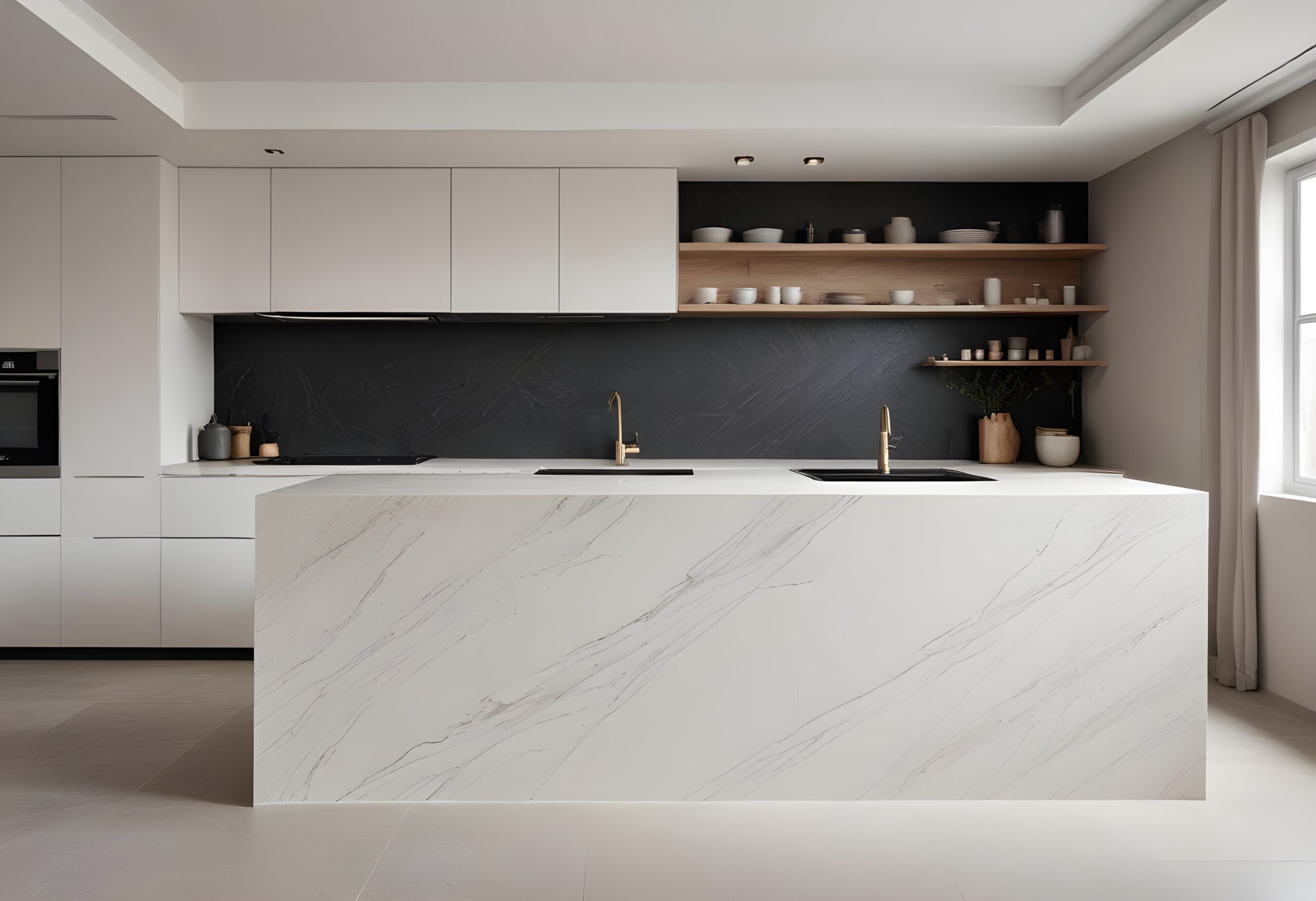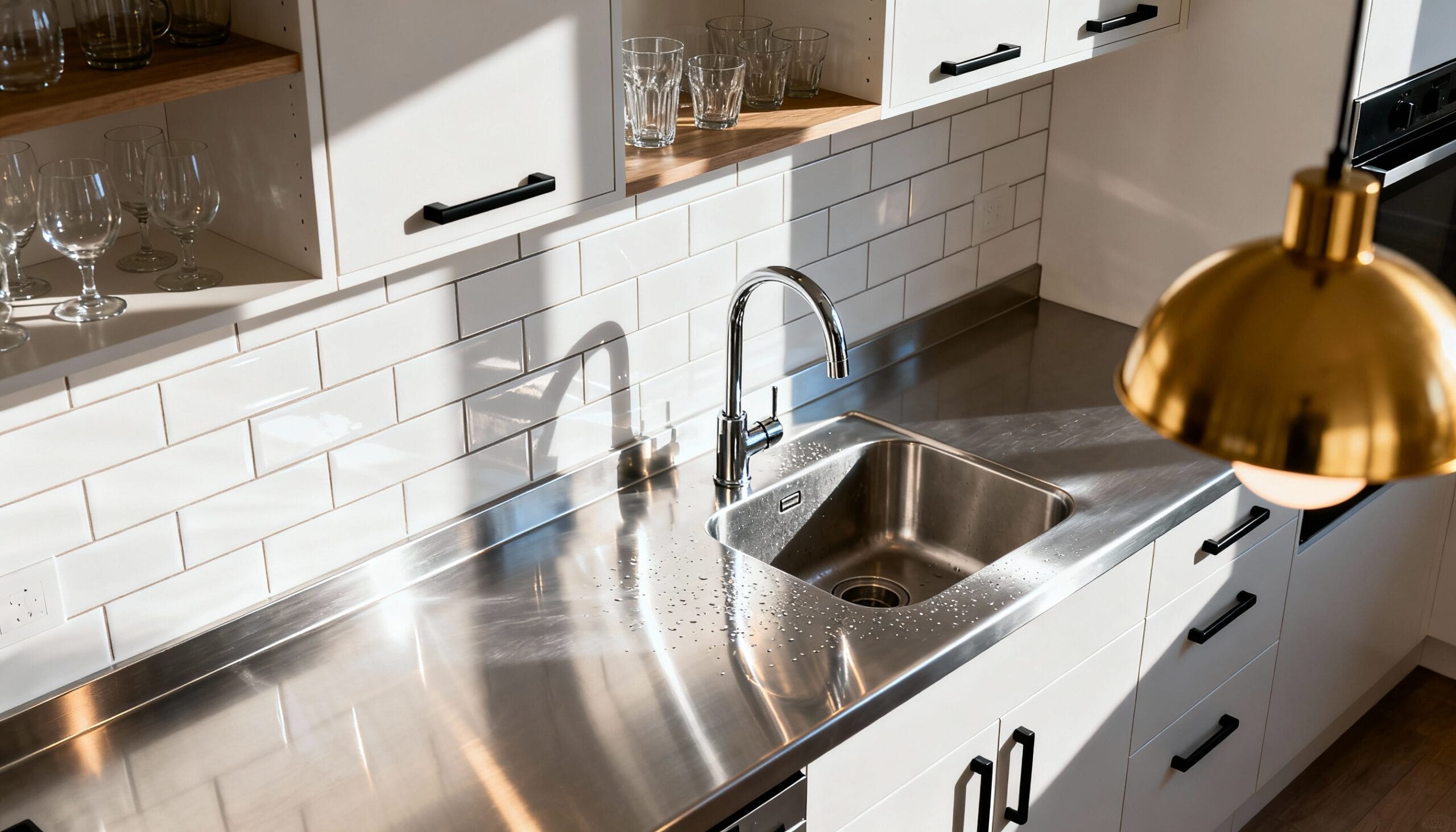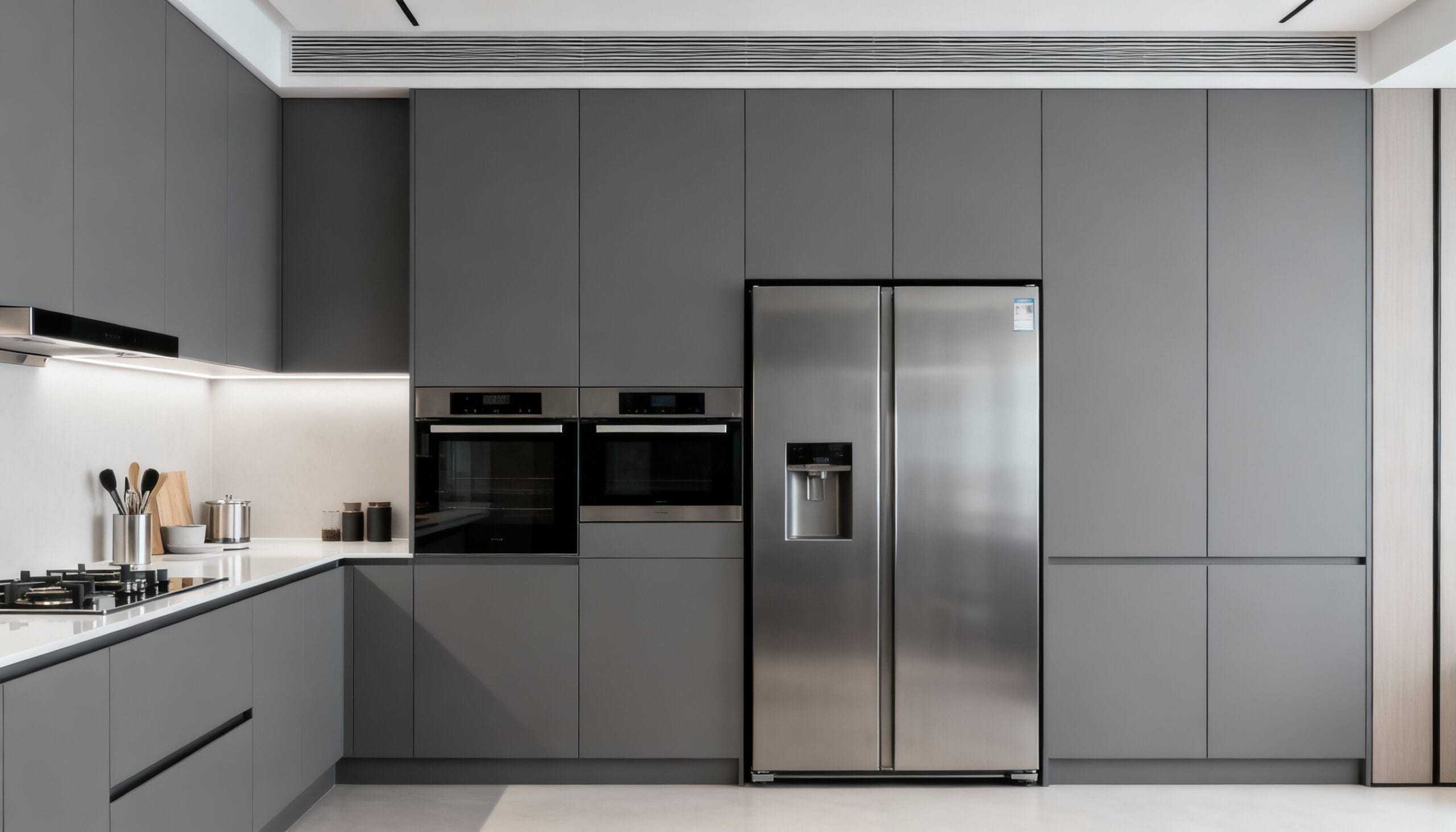Solid plywood vs particleboard depends on resistance in Malaysia's humid and wet surroundings. Much better than particleboard, which tends to absorb moisture and degrade with time, plywood's layered construction combats termites infestations, warping, and swelling. For homeowners seeking long-lasting cabinets and furniture in tropical climates, solid plywood offers the more durable choice.
Solid Plywood vs Particleboard 1: Moisture Resistance
Moisture resistance is among the most important criteria in deciding the longevity of furniture and cabinets for tropical Malaysian weather, where high humidity and regular rain are part of daily life. Due to its special design, strong plywood typically exceeds particleboard in this respect.
Constructed from several thin layers of wood veneer laid with grains running alternately and bonded under pressure, plywood is made from these. Exposed to moisture, this cross laminated construction naturally gives it strength and stability hence lowering the possibility of swelling, warping, or delamination. BWR (Boiling Water Resistant) or marine grade plywood, especially designed to resist moisture and humidity, is a great option for Malaysian kitchens, restrooms, or even general household use in the nation's humid climate.
On the other hand, particleboard is significantly more fragile. Made of resin, compressed wood chips, and sawdust, it has a porous structure that readily absorbs water. Once water seeps into the board via edges or scratches, it rapidly starts to grow, bubble, and lose its shape even when laminated. Especially if kept in badly ventilated areas, furniture will often disintegrate much quicker in Malaysia's hot environment without resistance.
Although particleboard is acceptable for dry locations and short-term applications, its lifespan is constrained in comparison to plywood in damp situations. For households looking for durability and long-run worth, solid plywood is the better choice, providing much greater defence against the demands of Malaysia's hot and humid climate.
Solid Plywood vs Particleboard 2: Strength & Durability
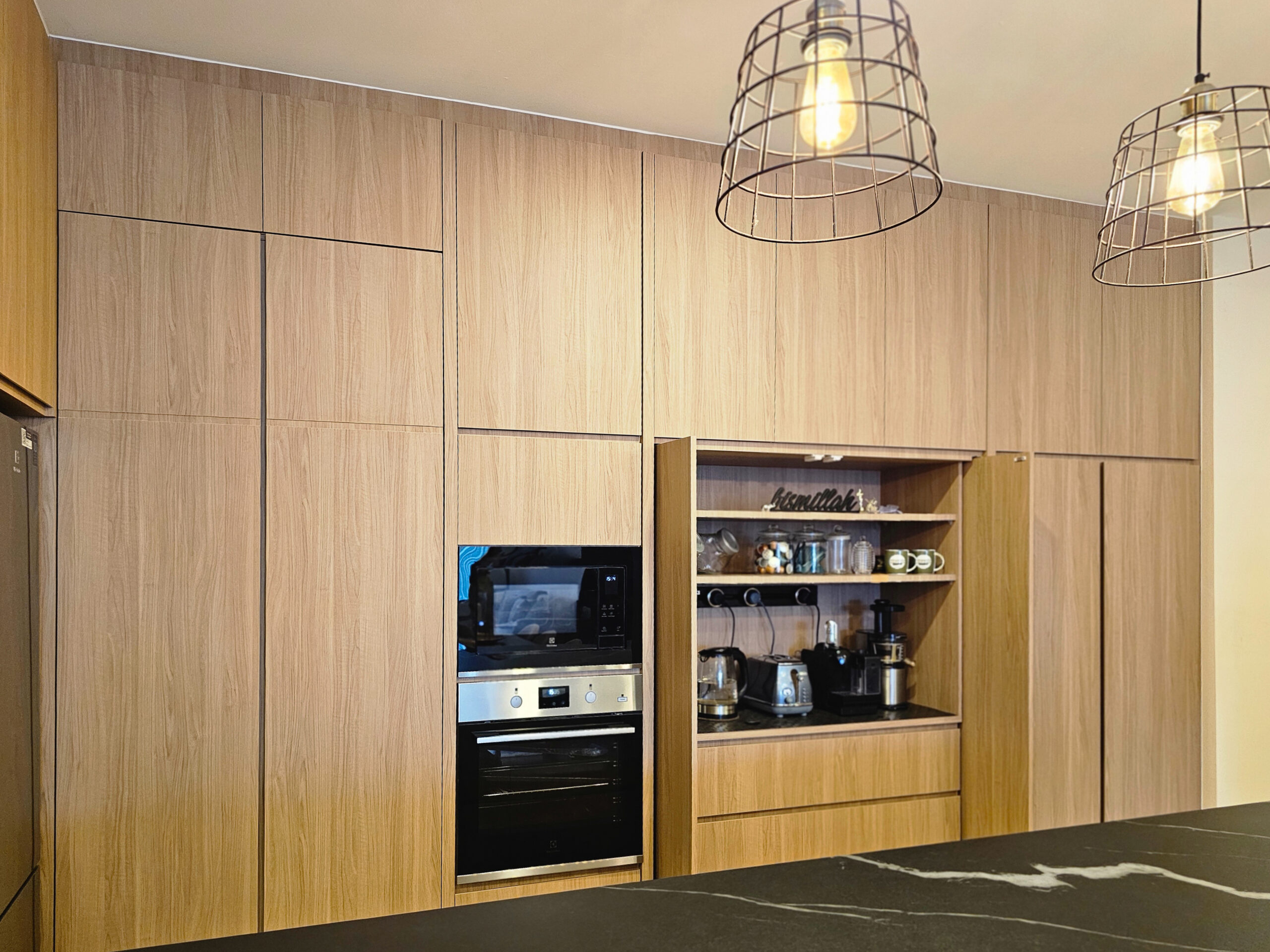
Regarding strength and lifespan in Malaysia's hot and humid tropical temperature, solid plywood clearly beats particleboard. Combining several thin pieces of wood veneer whose grains are perpendicular to one another creates plywood.
Super strength, dimensional stability, and warping resistance are among the benefits of this cross laminated construction. This layered structure lets plywood maintain its form and structural integrity over time in humid tropical environments when humidity levels vary greatly. It is also perfect for furniture and cabinets requiring regular handling or heavy loads like wardrobe doors or kitchen cupboards since it holds screws, nails, and hinges far better than particleboard.
@ampquartzcabinets Dapur kecik pun macam2 storage boleh pasang tau! Boleh PM kami sekarang untuk dapatkan FREE Consultation & 3D Design 🤩🤩 #AmpQuartz #kitchencabinet #5generations #cabinetaluminium #fyp
♬ original sound – pakmatwesternhq – pakmatwesternhq
Particleboard, produced of compressed wood chips, sawdust, and resin, offers a weaker and less long-lasting material. Particleboard usually swells, disintegrates, and eventually dissolves when exposed to moisture or humidity in Malaysia's humid climate. The internal structure starts to break down even when laminated once moisture starts to penetrate the surface. Particleboard's bad screw-holding ability also means that joints and fixtures may come loose more often, therefore lowering the general life of the furniture.
Conversely, plywood can last for decades if sealed or laminated properly; particleboard usually has to be replaced within a few years under the same conditions. Strong plywood is more suited for Malaysian enterprises and houses needing long-lasting dependability and durability as it is tougher and more weather-resistant; particleboard is more appropriate merely for temporary or practical purposes.
Solid Plywood vs Particleboard 3: Lifespan in Malaysian Climate
Particularly given Malaysia's weather, the material you choose for your cupboards and furniture affects its durability. Because of its construction and resistance to moisture, solid plywood often resists particleboard better.
The strength of plywood derives from the way alternating grains of wood are glued together in thin layers to provide stability despite humidity changes. Plywood handles swelling, warping, and peeling much better than particleboard in the humid Malaysian climate where there is a lot of rain and humidity in the air. With appropriate care, good quality, water-resistant plywood may readily last 10 to 20 years or longer. Particleboard, by contrast, won't last as long here.
Constructed of resin and wood chips, it rapidly absorbs moisture, which causes swelling, blistering, and general weakening. Particleboard can disintegrate in just 3 to 7 years even with a laminate once water enters. Furthermore, it becomes less perfect for damp areas like kitchens or bathrooms because it loses its capacity to retain screws more quickly.
Although particleboard seems less expensive at first, when you take into account how fast you'll have to replace it, it really is not. Solid plywood is still the way to go for Malaysians looking for strong and dependable furniture since it provides more resistance to the tropical weather and a longer life.
Solid Plywood vs Particleboard 4: Cost Factor
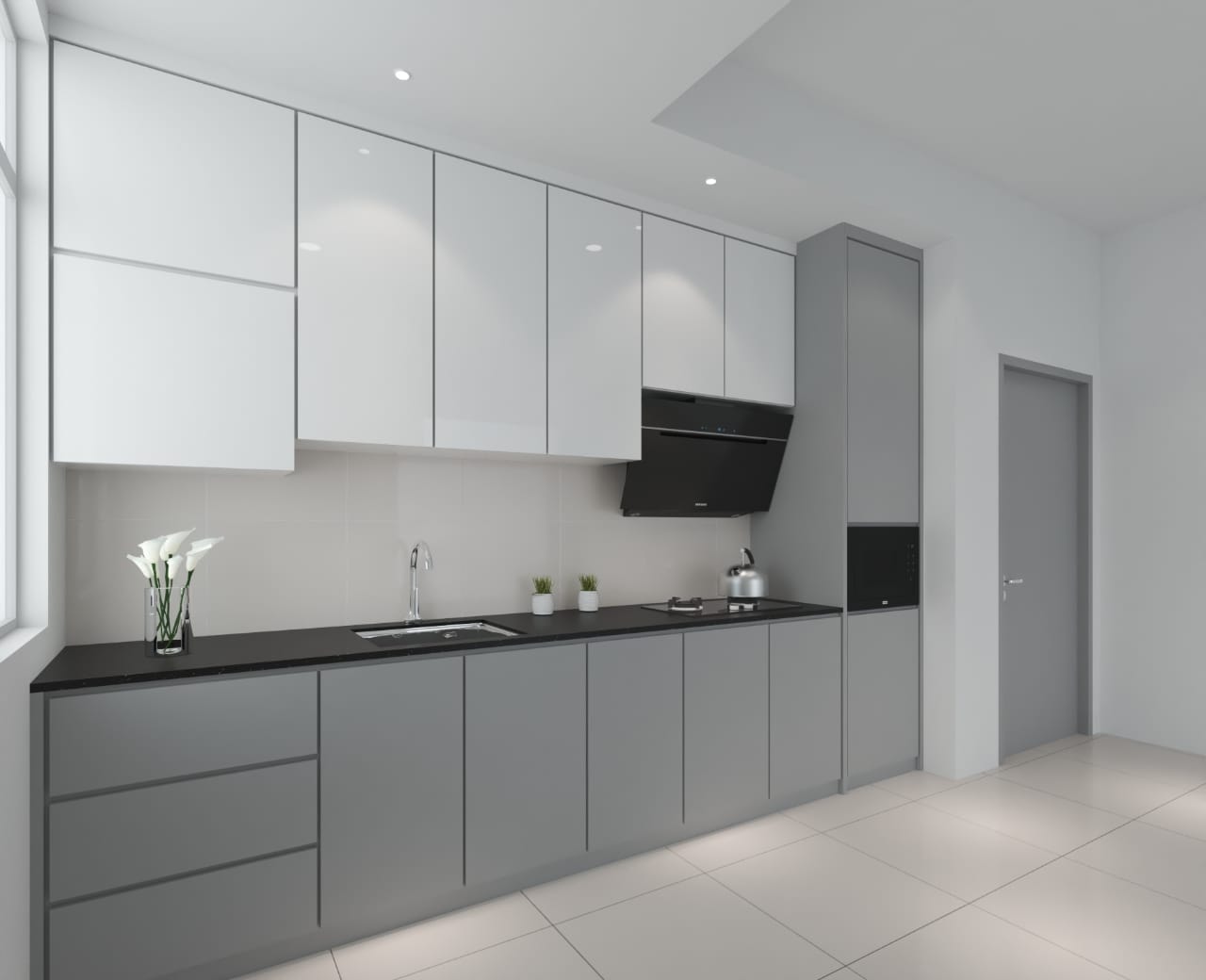
Cost frequently determines between solid plywood and particleboard for cabinets or furniture in Malaysia. Particleboard at first appears to be the more appealing choice, particularly for houses or builders on restricted budgets. Using resin, wood chips, and sawdust, its manufacturing method is far more affordable than solid plywood.
This cheapness helps to explain its popularity in mass market furniture and short term rental homes. But particleboard's flaws are exposed fairly rapidly by the tropical Malaysian weather with its humidity, frequent rainfall, and changing temperatures. Particleboard can expand, warp, and lose structural integrity even when laminated if moisture seeps in. Early repairs or entire replacements of furnishings that appear inexpensive at the time of purchase are therefore sometimes needed within just a few years.
@ampquartzcabinets Siapa cakap tak boleh dapat Aluminium Kitchen Cabinet dalam RM9k? AmpQuartz tak agree! 😍Don't miss out in this Raya with AmpQuartz's Limited-Time 3G Aluminium Packages 🎁 Exclusive Raya Package Includes: 🕋 FREE Upgrade to 40mm Double Profile 🕋 Stainless Steel Dish Rack 🕋 Stainless Steel Sink 🕋 Soft Closing Hinge 🕋 Pull-Out Tap 🕋 Cutlery Tray 🕋 Spice Rack 🕋 Gas Tray 💲No need to worry about the budget! You can enjoy 0% instalments for up to 24 months with all major banks at AmpQuartz! Aluminium 3GAluminium Promotion HariRaya
♬ original sound – AmpQuartz – AmpQuartz
Solid plywood, however, has a higher upfront cost, especially if one selects BWR (Boiling Water Resistant) or marine grade types made to resist humidity and moisture. Still, this first expenditure usually pays off in the long run. With good care, plywood may survive well beyond a decade since it is more robust, more durable, and more capable of withstanding the effects of Malaysia's humid environment.
Because it lowers the requirement for frequent replacements, homeowners who prioritise long-term value often find plywood to be more economical over time. Though particleboard could win on cost initially, solid plywood is the better financial option for Malaysian weather circumstances.
Solid Plywood vs Particleboard 5: Maintenance in Tropical Weather
How long solid plywood or particleboard lasts in Malaysia's tropical climate with its consistent humidity, torrential rains, and extreme heat depends mostly on upkeep. Made from pressed veneer layers set in alternating directions, solid plywood naturally resists warping and retains its form better in humid environments.
Plywood just needs a periodic wipe and a fast check for scratches or leaks if it is properly sealed with waterproof coatings, veneers, or laminates. Usually, plywood can be sanded, delaminated, or given a fresh finish even with small damage or swelling, which helps to repair it and keep it going. Particleboard, though, calls for much more attention in this context. Built of resin and compressed wood chips, it absorbs moisture quickly.
Should this occur, it can expand, become limp, or even grow mould; such issues are quite difficult if not impossible to correct. Although laminates or melamine treatments provide some protection, Malaysia's heat and moisture can cause them to peel or bubble, thereby exposing the core. Particleboard also needs to be properly cleaned to keep water out, which makes it less than perfect long-term choice for kitchens, bathrooms, or other moist locations.
Therefore, even if particleboard costs less up front, it usually calls for more frequent replacement; plywood will eventually require less maintenance and withstand the tropical climate better for homeowners. Solid plywood naturally takes the upper hand over particleboard in Malaysia's harsh climate for maintenance simplicity and durability.



